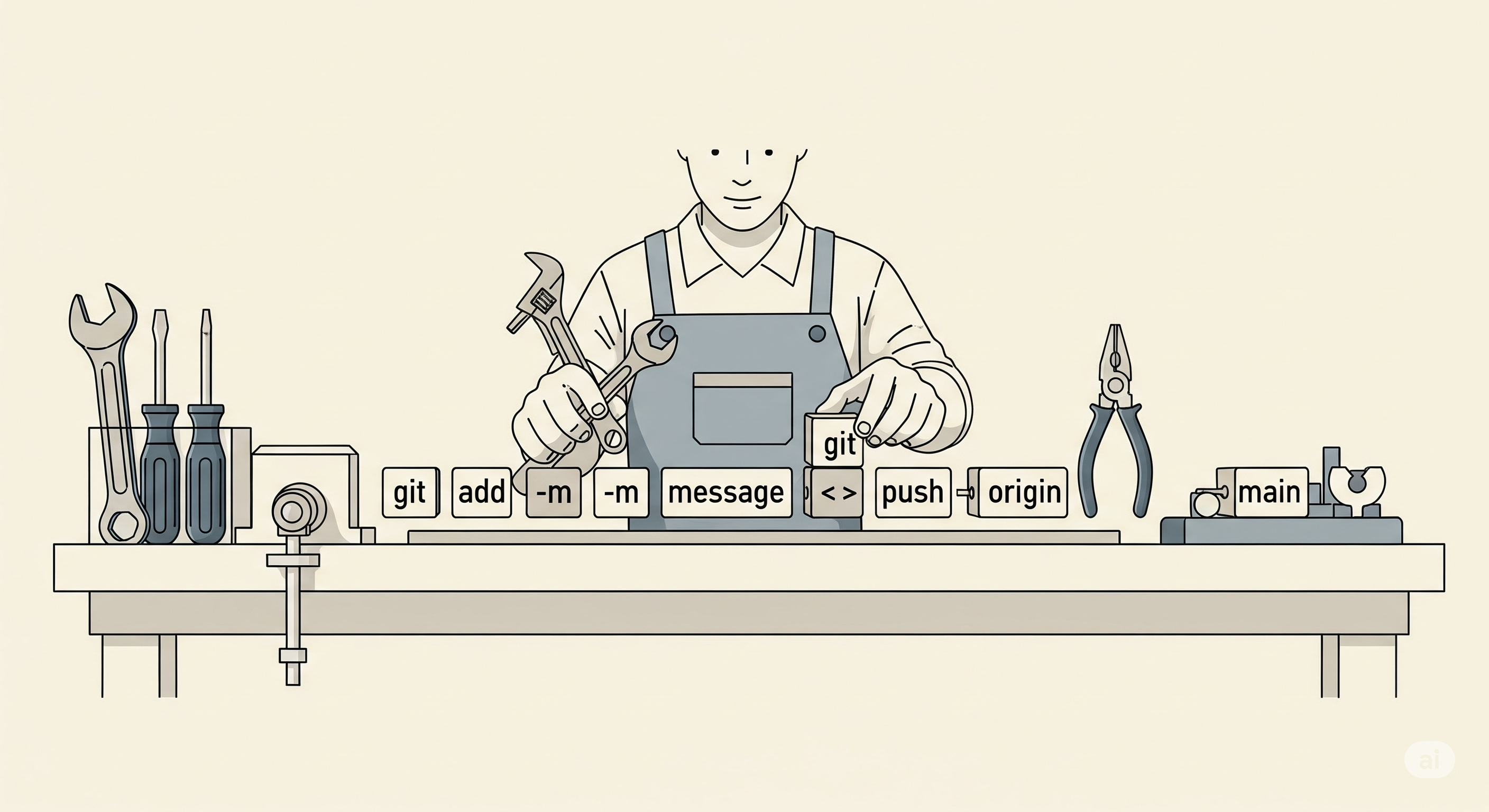
Handmake your Git commands at home
Long story short, you can extend Git’s functionality by creating your own custom commands! It’s simpler than you think. Here are 3 steps:
- Create an executable binary to do the things you want your git command to do. This could be a shell script, or a program in any language.
- Name it
git-<command-name>. For example, if you want a command calledgit cleanup-branches, you’d name your scriptgit-cleanup-branches. - Put it in your $PATH and make it executable (
chmod +x /path/to/your/script).
Now you can use your new Git power via:
git <command-name> [arg-1] [arg-2]
Pretty neat, huh? 😎
Some tips:
/usr/local/bin/is often a good place to store your personal binaries, as it’s usually in your system’s default PATH.- To update $PATH you can edit shell config files. (like
~/.bashrcfor Bash or~/.zshrcfor Zsh).
Just add a line like this, replacing/your-directory/my-git-custom-commandswith the actual path to where you store your scripts:PATH=$PATH:/your-directory/my-git-custom-commands
Don’t forget to source your shell’s config file (e.g.,source ~/.bashrcorsource ~/.zshrc) or open a new terminal for the changes to take effect.
Walking through an example:
Let’s look at a real-world example of a handy custom Git command: git-ignore-local
Repo: https://github.com/immortalcodes/git-ignore-local.
This tool addresses a common annoyance: sometimes you want to ignore files in your local Git repository without adding them to the project’s .gitignore file. This is perfect for machine-specific configurations, temporary debug logs, or IDE-generated files that clutter your workspace but shouldn’t be shared.
The git-ignore-local tool, as described in its README, cleverly uses Git’s .git/info/exclude file to achieve this. Here’s a quick rundown of how it works and why it’s so useful:
- No more
.gitignoreconflicts for local ignores: You can keep your personal ignore rules separate from the team’s shared rules. - Easy to add and remove: Just use
git ignore-local <file_or_pattern>to add an ignore rule andgit ignore-local --restore <file_or_pattern>to remove one. - Keeps your repository clean: Avoid committing files that are only relevant to your local development environment.
Imagine you’re working on a project and your IDE creates a .idea/ folder. You don’t want to commit this to the main repository, but constantly seeing untracked files is distracting. With git ignore-local .idea/, problem solved! ✨
The git-ignore-local project provides clear instructions on how to install it, either by downloading a pre-built binary or building it yourself. Once installed (typically by copying the executable to /usr/local/bin/ and making it executable), you can use it just like any other Git command:
Ignoring files:
git ignore-local .env logs/debug.log
Restoring (unignoring) files:
git ignore-local --restore logs/debug.log
This git-ignore-local example perfectly illustrates the power of creating your own Git commands. It solves a specific problem in a clean and efficient way, integrating seamlessly with Git’s existing workflow.
So, what Git annoyances do you encounter regularly? Maybe it’s time to handmake your own Git command to conquer them! Get creative and happy scripting! 🚀